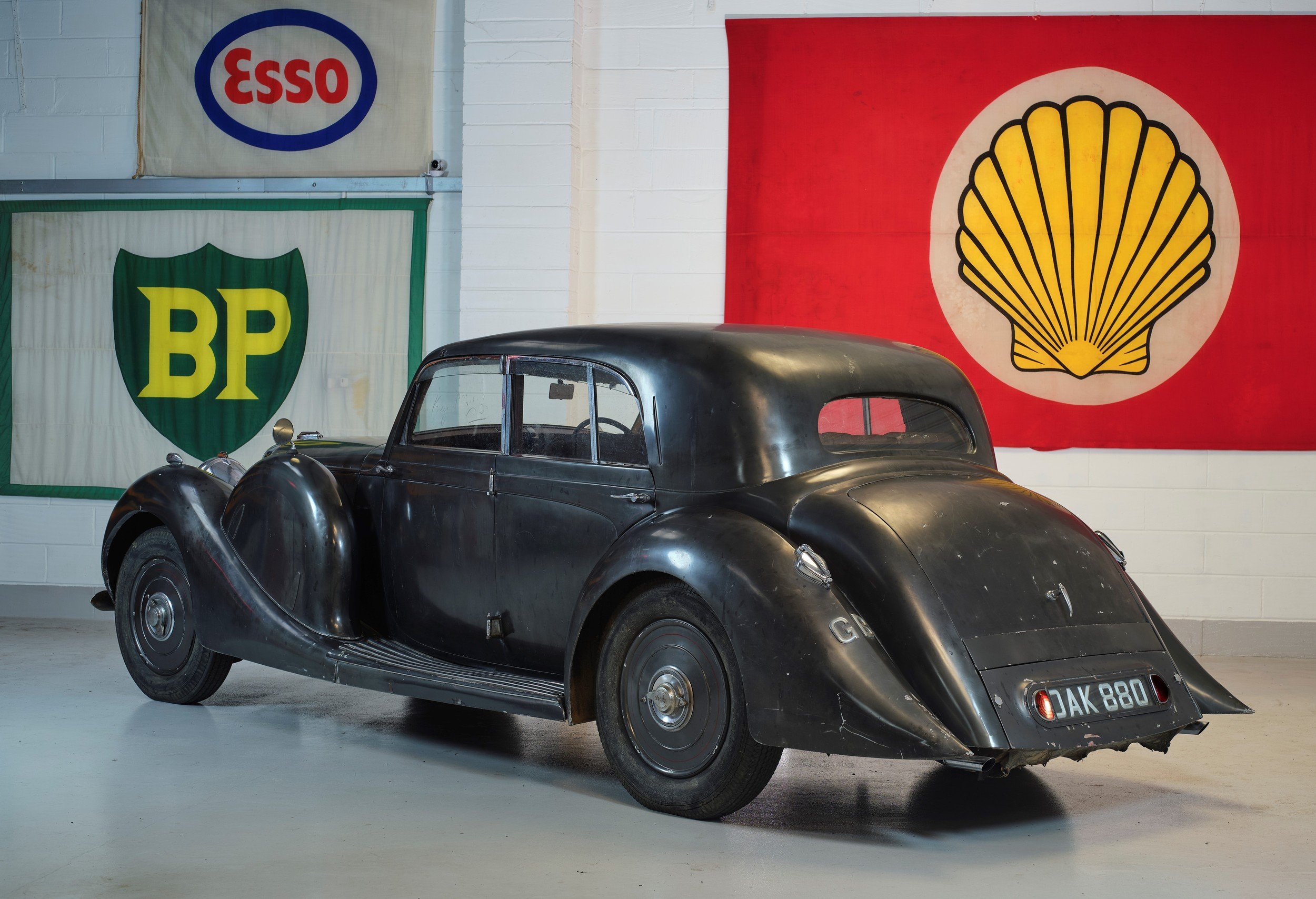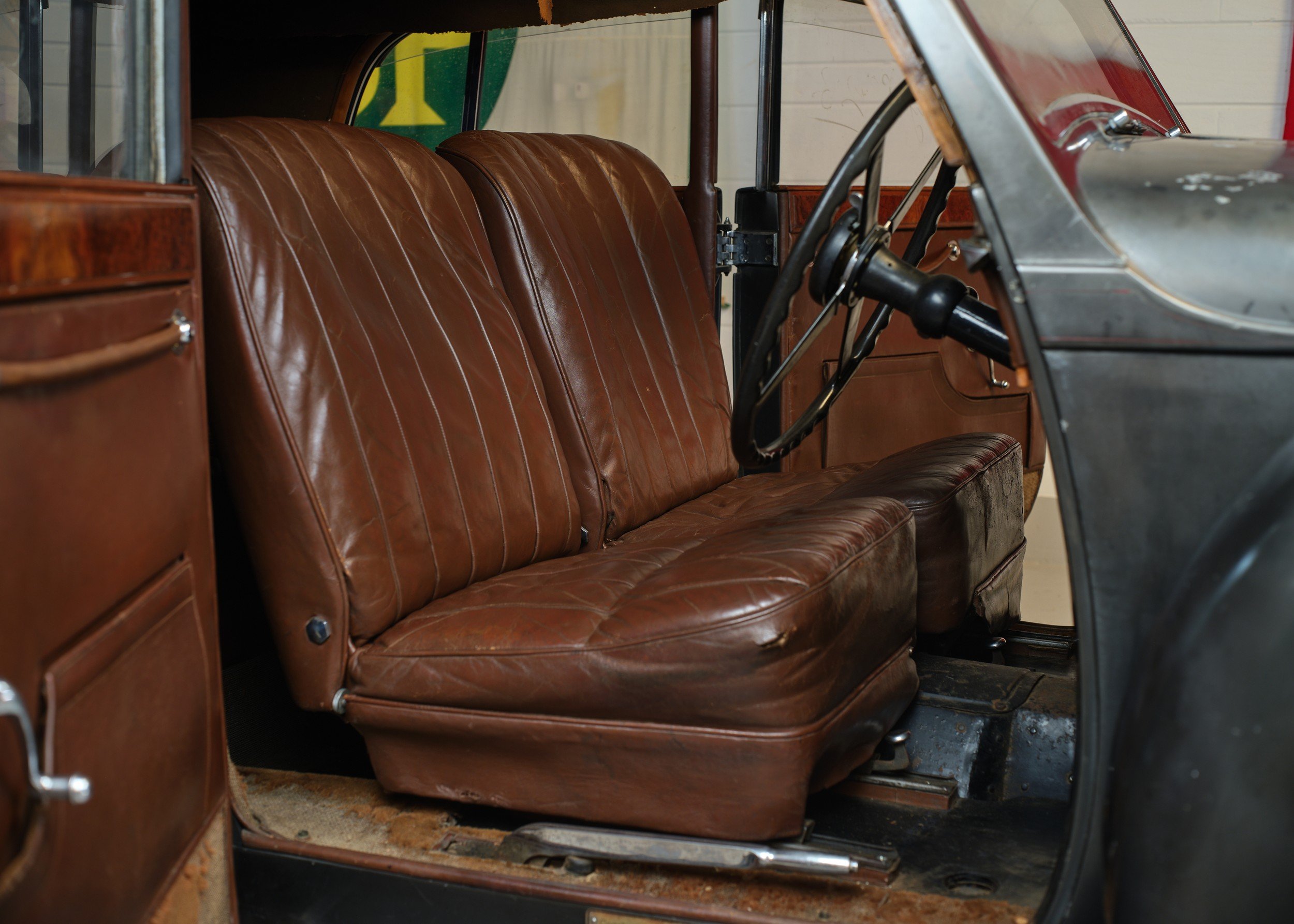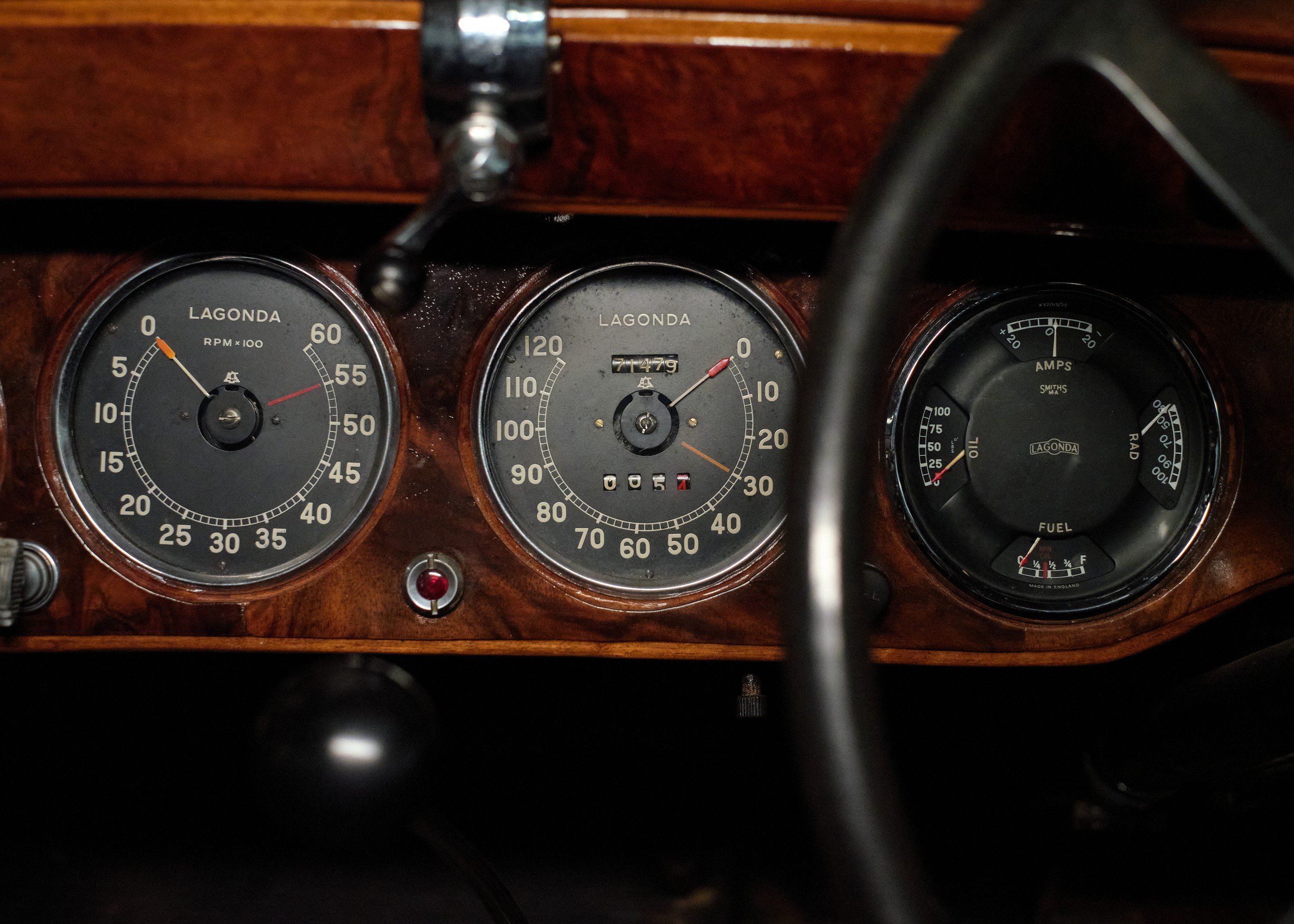Lagonda v12 sports saloon set to wow auction viewers in frome
"It is a new-born car, unrelated to any yet on the road - here or on the Continent. Such is the 12-cylinder Lagonda - a car destined to rank from now on, among the greater names in motoring history." (Lagonda Automobiles, August 1937)
Often regarded as the finest of W.O.Bentley’s efforts (and let us not forget this is one with an exceptional Curriculum Vitae), the Lagonda V12 was by far the standout British model of its day, seated firmly in an exclusive club of 1930s road cars that could exceed 100mph in standard tune. Launched in 1936 at the Olympia Motor Show, the new V12 was the ultimate expression of a supergroup of exceptional designers of the era, with a simple design ethos; sportscar pace and performance with limousine comfort.
The fabulous V12, inspired by contemporary aero engines, featured twin overhead camshafts (one per bank), twin SU carburettors, a combined duplex-chain / gear-driven timing system and Lanchester-type vibration damper. The 4.5 litre unit could deliver an ample 180hp at 5,500rpm, driven through a sporty centrally-mounted four-speed manual gearbox and conventional pedal layout.
Deliveries did not commence until 1938, topping a mere 189 chassis before the commencement of World War Two ended production. The advanced chassis employed double-wishbone independent front suspension and was made available with a varied choice of coachwork; the short-chassis V12 Rapide roadster of course provided even more performance and desirability. Of the Lagonda V12s produced between 1938 and 1940, under 100 are thought to have survived to the present day.
Chassis 14070 was ordered in late 1938 by a Mr. Bertram Parkinson of Creskeld Hall, Arthington, near Leeds in West Yorkshire. Parkinson was a very successful wool merchant with a large business in nearby Bradford. On 14th December 1938, Short Chassis number 14070 was allocated to the build, alongside one of the improved Sanction 2 engines (number V12/139). At the end of the following January a short chassis sports saloon body (number 8057) was added to the order.
The following week 14070 was painted in Dockers Gun Metal Grey (3681) and trimmed in Lagonda LG1 Brown leather, with matching carpets and baize headliner. Of course, as befitting a man of his status, Parkinson specified his new Lagonda with a few choice options, specifically a sliding sun-roof, sun visors, a rear screen blind, folding luggage carrier, Lucas Mellotone twin horns, a Smiths luminous clock, a Lucas fog/passing lamp, Lucas external mirrors, a set of ACE wheel discs and a full front bumper.
Suitably equipped, 14070 left the works in the last week of March for Lagonda’s London showrooms, presumably to be presented to well-heeled clientele before being dispatched to Central Garage Ltd. of Bradford on 3rd of May 1939. Now becoming DAK 880, 14070 was registered in early June 1939 and then handed over to Mr. Parkinson.
A mere two weeks later, DAK 880 was back to the works for its first service at 1100 miles, which included rectifying one or two rattles and small water leaks, and the fitting of a new starter motor. Later the same summer, DAK was returned to the works for a pre-continental tour check over. We understand the Parkinsons were soon after touring the Swiss mountains when war was declared, necessitating a high speed blast back via France to the safety of home turf.
After returning from its continental trip, DAK was once more at the Works for an oil change and new speedo. The current mileage was 9,064 - it had clearly been a busy and eventful 3 months of ownership! DAK visited the Works in January, April and again May of 1940, at which point it remained at Creskeld Hall and up on blocks with the wheels removed. A somewhat dubious note at the time claimed the clutch had failed, the real reason for lay up was more likely for fear of it being requisitioned for the war effort.
DAK returned to the roads after the war, making a further appearance at the Works for a major overhaul at just under 11,000 miles. At which point we believe Mr. Parkinson , traded his trusty Lagonda in, and it passed to its 2nd owner, Mr. A.B.Clifford of Farnley Sand & Gravel, in April 1947. One year later and the mighty Lagonda changed hands once more, to a Mr. Anthony Green of Morley, Yorks, and then again to a Mr. Stanton Willis-Bates of Ilkley, director of the nearby Vapalux Lamp Company. After around one year, DAK moved to its next owner via the trade, a Mr. Eric Horton of Derby took delivery on 19th May 1949.
Mr. Horton kept DAK for 5 years, during which time it was carefully maintained by Works, before trading back to Hoffman Garages’ Leicester branch in the summer of 1954. At this point we believe the Lagonda passed through London dealer H.R. Owen to a Mr Frederick Henry Neubert of Keston in Kent. Mr. Neubert was clearly a keen driver, acquiring presumably a speeding ticket in January 1955 with a notice to produce his documents at a Peckham police station
Now DAK’s sixth owner, Mr. Neubert enjoyed the V12 until 1960, at which point it was sold to avid V12 Lagonda enthusiast Jim Whitehead of New South Wales in Australia, who at the time were touring the UK seeking to acquire suitable examples to add to his collection.
Arriving off the boat in Sydney harbour, Jim drove his new acquisition up and down his farm road a few times, then into storage in a dry barn. So swift was the Lagonda’s transit into storage, that the wax crayon markings on the windows stating ‘KEY 23’ (the allocated number from the outward shipping journey) remain over 60 years later, still to be found on the car’s door glass.
With a sizeable collection of 14 V12 Lagondas, Jim Whitehead was a renowned expert and contributor to the V12 revised handbook and workshop manual of 2003. During his ownership, Jim fully rebuilt four of his V12’s engines, applying knowledge gained over several decades to incorporate various improvements, from camshaft timing recalibrations to revised lubrication. DAK’s engine benefitted from such experience. Having restored the engine (around 12 years ago now), Jim also realised the historical significance of such a rare and unmolested example, and wisely decided to leave the coachwork and interior completely untouched.
Now repatriated into a small collection in the UK, we are presented with a supremely original V12 Lagonda. Still wearing its first coat of paint and trim, and in the same order with which it entered dry storage in 1960, we would advise sensitive recommissioning and running-in before being pressed into service once more. We note also the tyres are at least 62 years old, we expect they are also ready for retirement. The V12 maintains its original 'Jackall' built-in hydraulic jacking system, for all four wheels, with the pump and valves all located in the left hand tool kit, shaped to mirror the right hand spare wheel cover.
With a total production of around under 200 such examples of all specifications and derivatives, the Sports Saloon are scarce in the extreme and are thought to be rarest of all of the V12 variants. Chassis 14070 is offered with copies of the original factory build sheet, factory service card, extensive history from new, correspondence with the family of the first owner, original toolkit and jack and original UK registration number DAK 880. An incredible find and a genuine once in a lifetime opportunity for the true enthusiast.
Lot 24 - 1939 Lagonda V12 Sports Saloon
Estimate: £60,000 - 80,000
classic cars
AUCTION:
Saturday 12 February at 2.00pm
at Dore & Rees Auction Salerooms, Vicarage Street, Frome BA11 1PU
VIEWING:
Friday 11 February 10am to 6pm
Saturday 12 October 10am to 1pm
Marquee viewing at the Cattle Market car park
next to Cheese & Grain, Market Yard, Frome BA11 1BE





